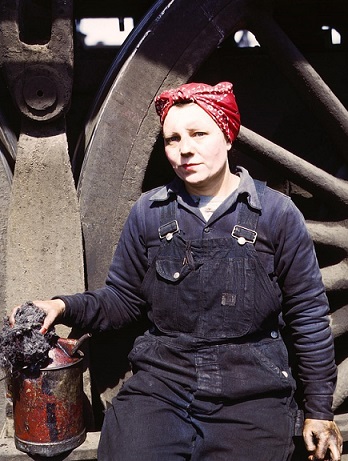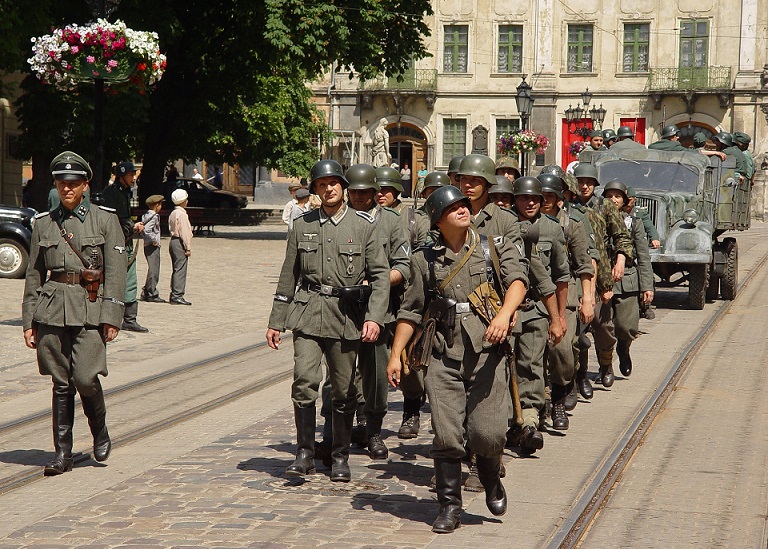For capitalism’s apologists it is usual to understand fascism as a social order completely alien to the system, as an unfortunate event occurring as a result of bourgeoise democracy’s deep crisis.
 Juan Diego García
Juan Diego García
But fascism is merely another form of the capitalist order, a formula the bourgeoisie reaches for when its system is plunged into a deep crisis that puts its very survival at risk.
Those who have the real power decide whether in certain circumstances it is advantageous to maintain the bourgeois democratic order or whether, conversely, it is vital to exercise the harshest dictatorship possible.
Hitler, Mussolini and Franco did not come to power because they had massive backing from the population but because in specific critical situations they were the only solution for their respective countries’ bourgeoisie.
Hitler only had just over 30% of the vote but in the face of deep divisions in the German left and the democratic, liberal sectors of the real power (banking, large-scale industry etc) he opted for Nazism. Another factor was the triumph of fascism in other countries and the fact that this formula had significant support in the democracies that would later make up the allied front in the Second World War.
In the United Kingdom, for example, the heir to the royal throne was an open supporter of Nazism and in the United States the KKK groups, which operated without any limitations, were not the only force of fascism.
 Henry Ford himself, a symbol of modern capitalism, visited Hitler and wrote two books of apology for his system of government. Several businessmen from the ‘democratic’ world saw the Nazi regime as a very useful alternative for fighting communism.
Henry Ford himself, a symbol of modern capitalism, visited Hitler and wrote two books of apology for his system of government. Several businessmen from the ‘democratic’ world saw the Nazi regime as a very useful alternative for fighting communism.
The tardiness in supporting the USSR – in conflict with the Nazis – has always been interpreted as a calculation by the Western powers who hoped for Stalin’s defeat so they could then reach agreements with Hitler and bring about a new apportionment of the planet. They were all capitalists and the Second World War (just like the First) broke out due to struggles between capitalist powers to share out the world.
The most pessimistic are asking if the world will fall into a deep crisis and whether fascism will once again be the saving formula for big business.
In the United States the Trump movement is not a minor matter; nor is the advance of the far-right in Europe and still less the openly putschist actions of the creole right in Latin America and the Caribbean.
For the moment, in the centres of thought of the bourgeois order the predominant opinion is that, despite a certain economic imbalance, things will not end in the catastrophe some predict. If that is so, the fascism that is being reborn in the whole world will have to wait for a better opportunity. But they will always have the hope of abrupt changes, unexpected situations and unforeseen events that permit once again the rise of fascism to government. A new world war could be that much awaited opportunity.
The fascism of today shares many characteristics with the traditional version. It is not the big bourgeoisie that populates its ranks but certain elements of small and medium-sized landowners, groups of the marginalised and underclass, and some sectors of the salaried class highly affected by the economic crisis.
 There are also certain civil servants as well as business and services employees and, as in the Germany of old, the perennial ‘corner shopkeeper’ who hates the proletariat and feels fulfilled wearing a paramilitary uniform with a weapon and the power to abuse the weakest.
There are also certain civil servants as well as business and services employees and, as in the Germany of old, the perennial ‘corner shopkeeper’ who hates the proletariat and feels fulfilled wearing a paramilitary uniform with a weapon and the power to abuse the weakest.
The ideology of new fascism is still fundamentally the same although certain elements are different. Yesterday the ‘inferior races’ to be exterminated were the Jews, gypsies, ethnic minorities and disabled people, communists, socialists, liberal thinkers, artists and critical intellectuals.
Today the target is the immigrant (especially if they are not ‘white’), the democrat, the trade unionist, the unconventional thinker and anyone who participates in movements which, in their opinion, affect Western and Christian civilisation: that is, anyone who defends the rights of women, minorities, the various gender options, ecologists and all those who in their view are a risk because they promote critical thinking.
New fascism – faithful to its nature – supports the current neoliberal economic order. It does not question capitalism in any significant way; it just proposes minor changes, measures of demagogic style and various forms of the so-called populism that sound good to the ears of many people affected by the economic crisis and by the profound discrediting of the traditional institutions.
These are demagogic promises of change that fascism forgets once it arrives in power. Nowadays, coups d’état have become part of new fascism’s way of operating, although without great success so far.
For example, the assaults on the parliaments of the United States and Brazil failed; a similar attack on the German institutions (also unsuccessful), the dismantling of certain traditional institutions that establish rights of the citizenry (in Poland and Hungary, for instance), the putsch of the right and of openly Nazi forces in Ukraine against the pro-Russia government, which was successful at first but has ended up with the current military conflict (of unpredictable consequences).
 One might think that for now new fascism has miscalculated.
One might think that for now new fascism has miscalculated.
However, and despite its relative failures, the far-right has demonstrated that it enjoys substantial support in certain institutions (the military, the police, security corps and sections of the civil service and of big business). Substantial support, but still insufficient.
In addition, there are many big businessmen who encourage and finance them.
And there exists a calculated tolerance on the part of much of the mass media who, although they do not support them openly, neither do they fight them or point to them as enemies of democracy.
(Translated by Philip Walker – Email: philipwalkertranslation@gmail.com) – Photos: Pixabay












.jpg)












